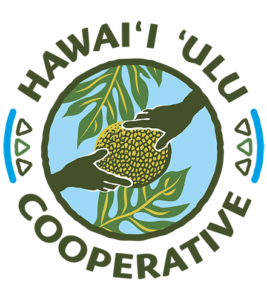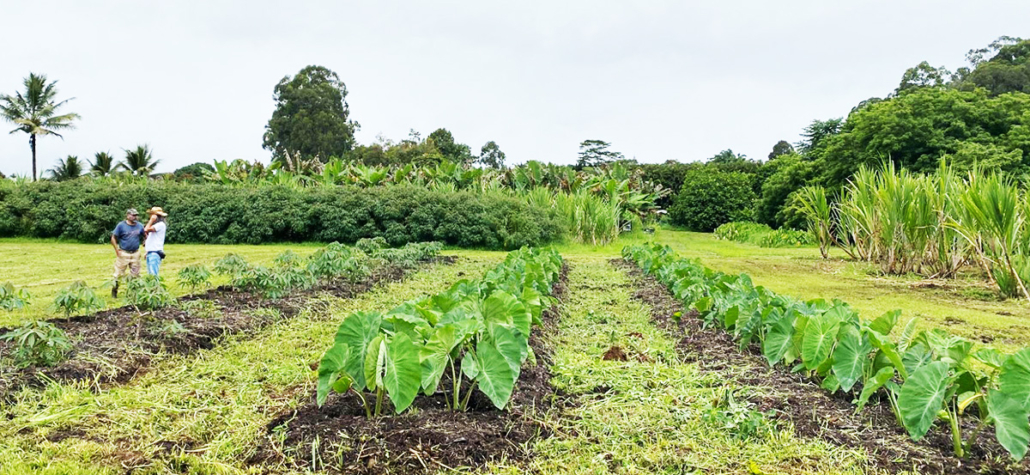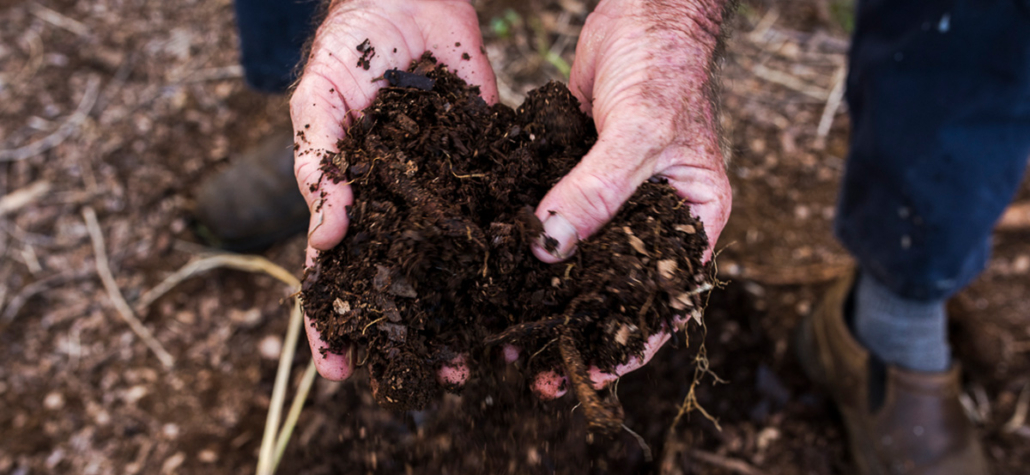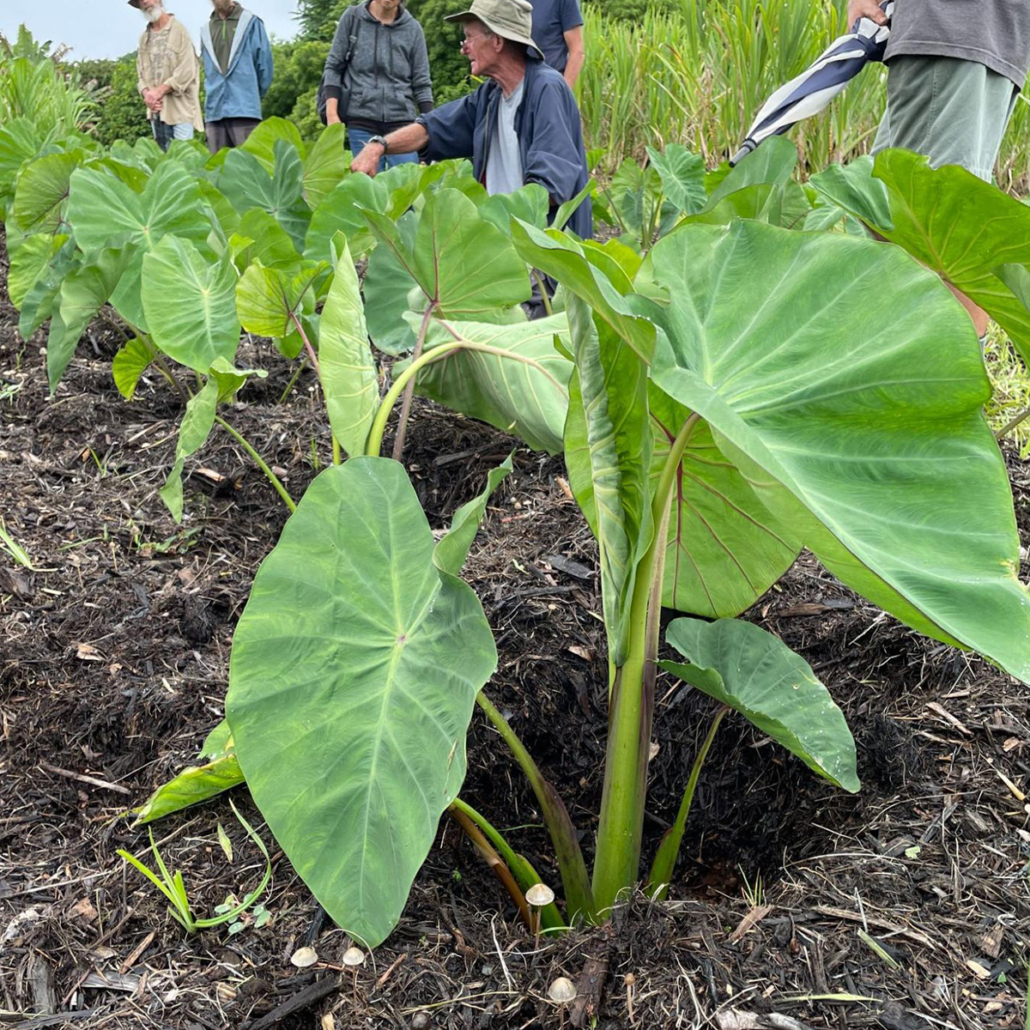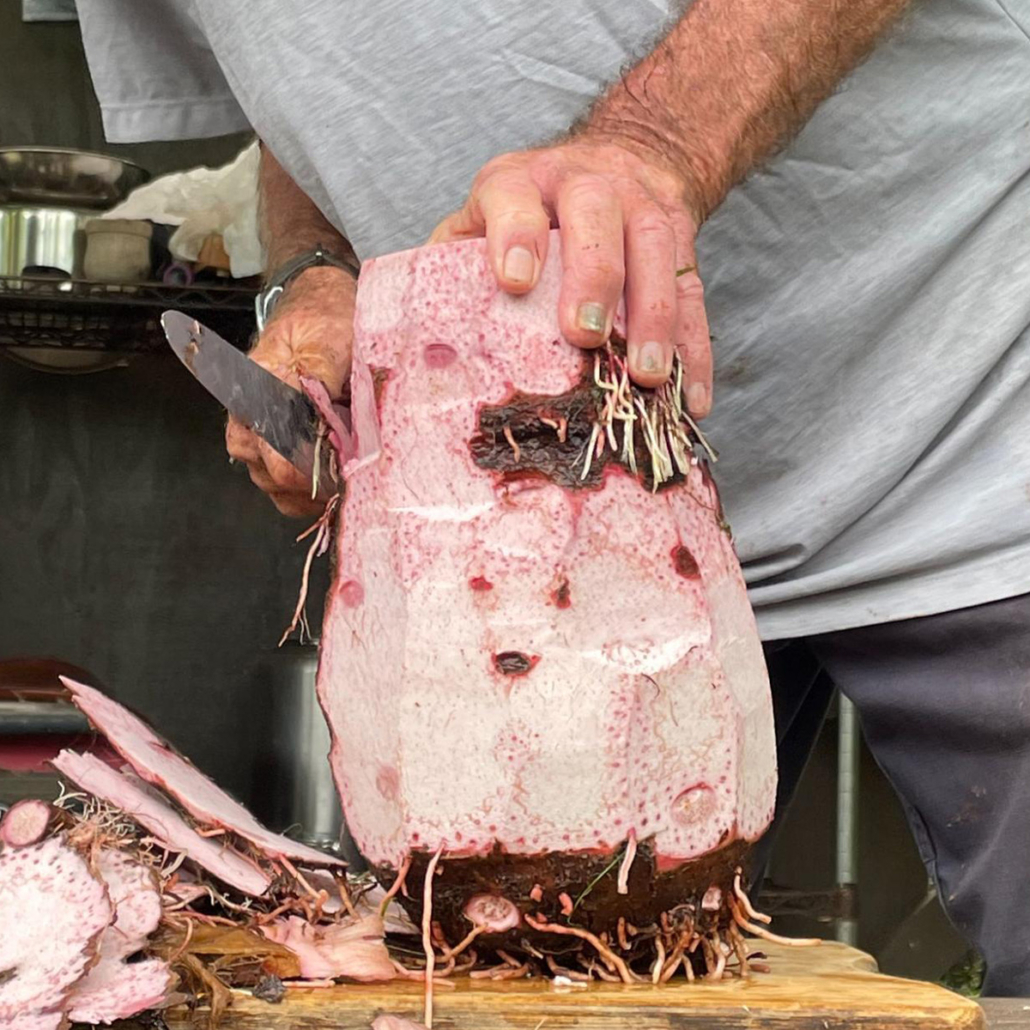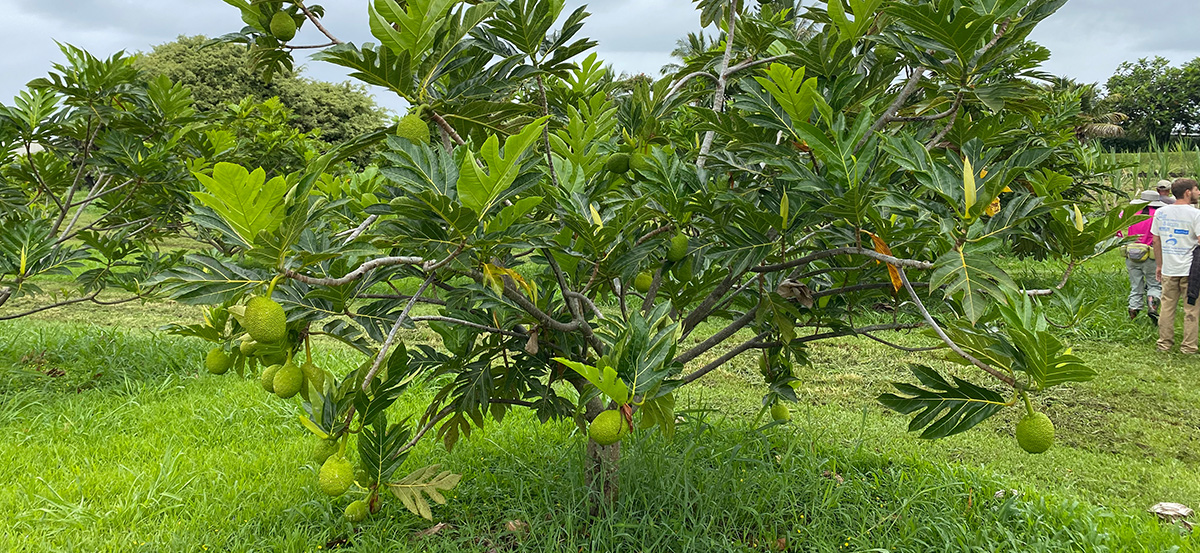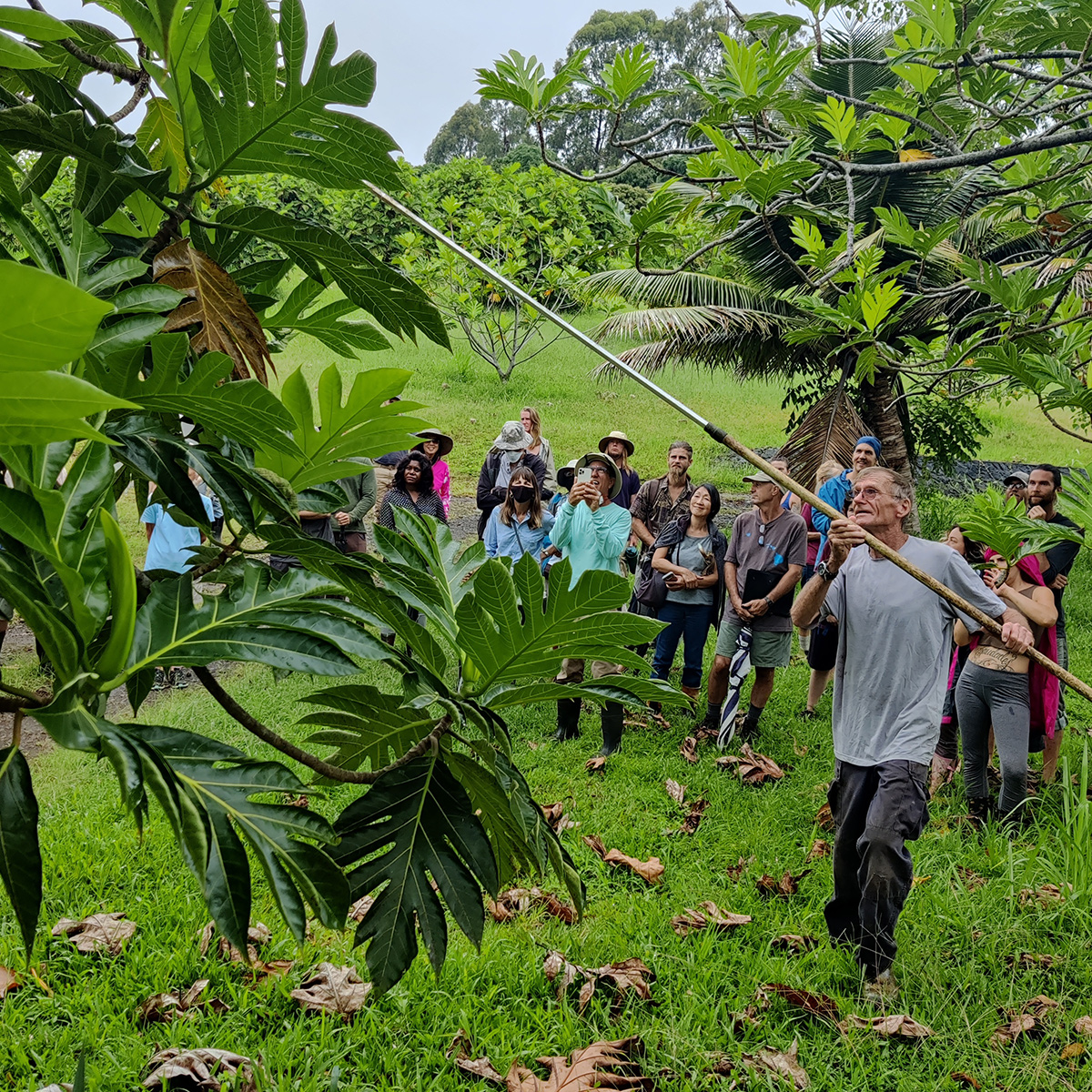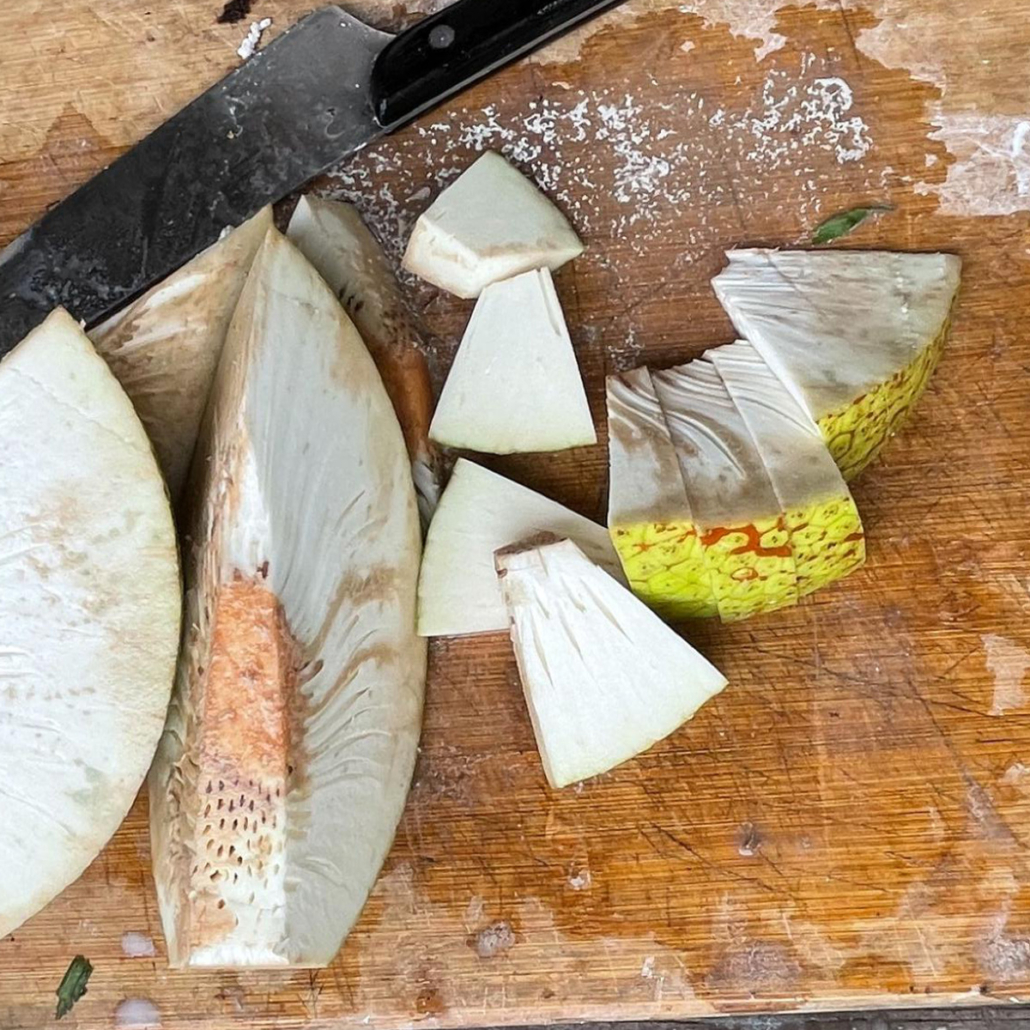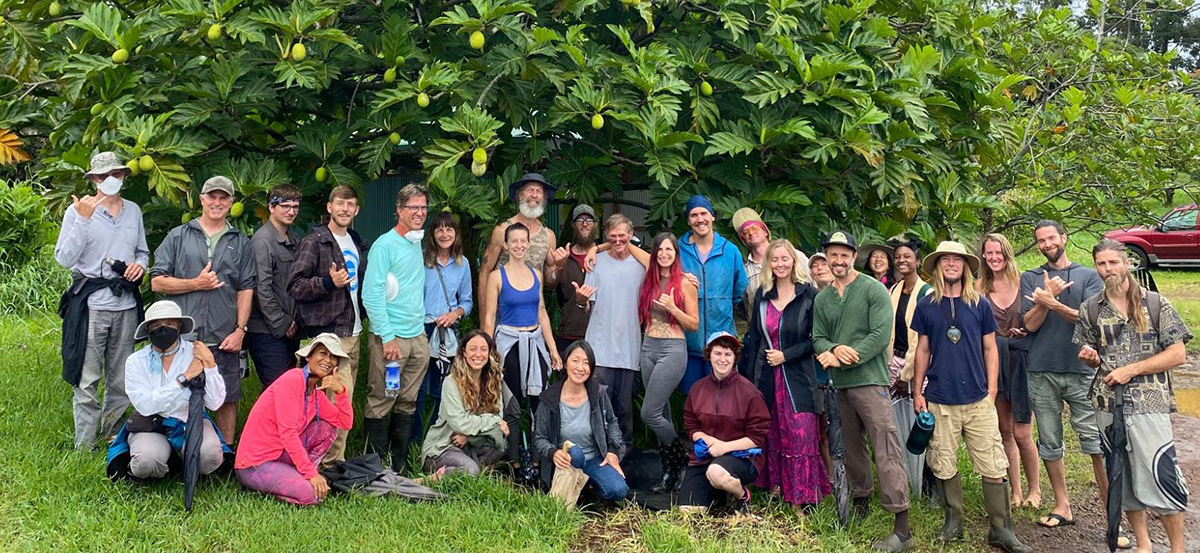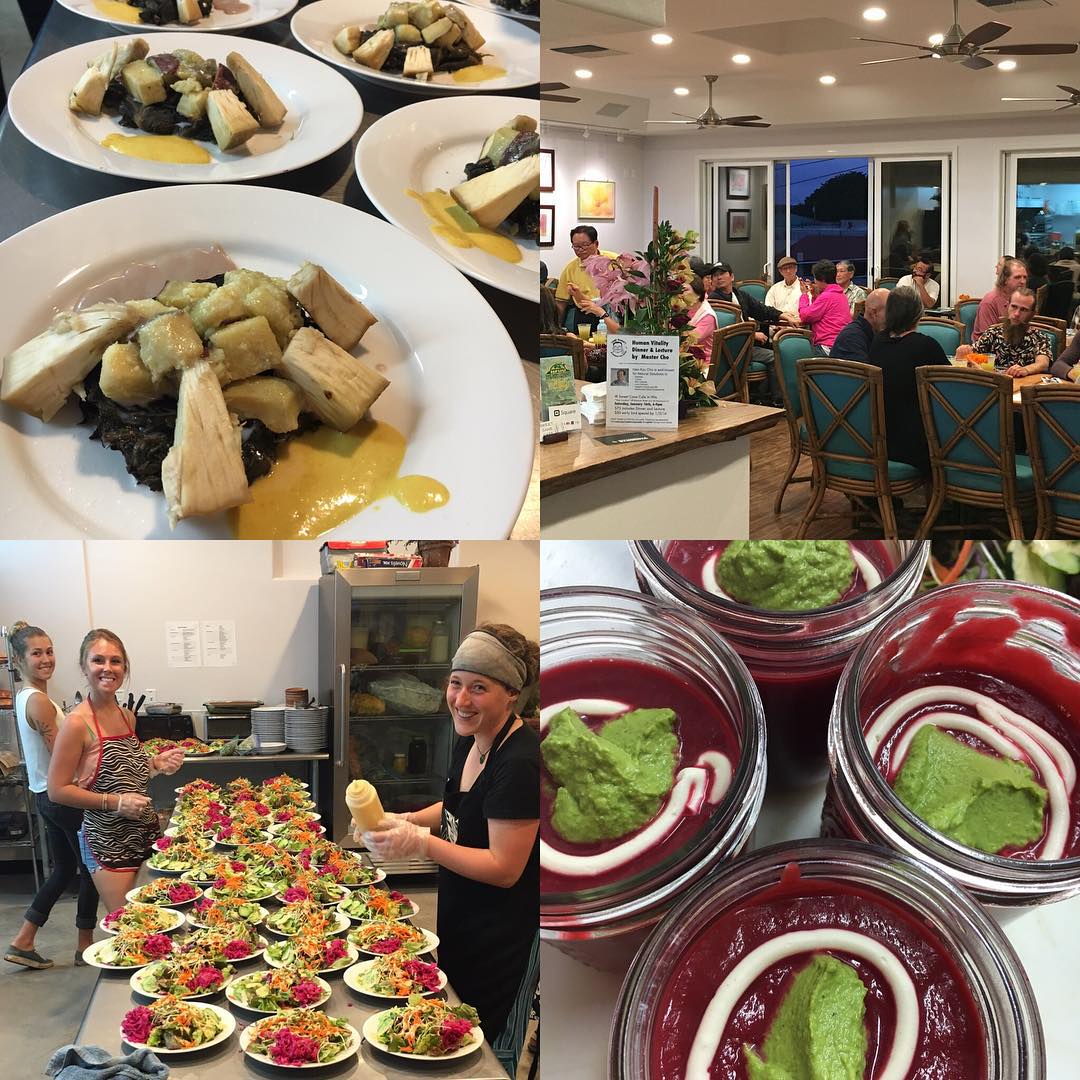Sweet Cane Farm Tour with John Caverly
Text and photos by David Girbino
On July 25th, 2022, the Hawaiʻi ʻUlu Cooperative coordinated a special farm tour with one of our founding members.
John Caverly (also known as “Ginger John”) has been living and farming on Hawaiʻi Island for 52 years, and heʻs been farming for 50 of them.
John’s approach to holistic farming is based around a system of organic farming techniques known as Korean Natural Farming (KNF), which prioritizes the health of the living soil through the introduction and cultivation of Indigenous Microorganisms (IMOs).
John was introduced to KNF through Master Han-Kyu Cho, the founder of Korean Natural Farming (KNF), who had been invited to speak at an event in Kona many years ago by the Hilo-based physician Dr. Park. John has used his farm in Papaikou, Sweet Cane Farms, to test and demonstrate of the power of KNF:
“When I first arrived on this land, it was an abandoned sugar cane farm, and there wasnʻt a single blade of grass left alive here. The previous had farmed the land using conventional farming practices, and then methyl bromated it before selling it to me. I tried planting things like kalo and sweet potatoes, but everything was dying; when I would add fertilizers the plants would start growing, and as soon as I stopped, they would die.”
Things were looking bad for Sweet Cane Farms, but they started turning around when John met Master Cho and Dr. Park.
“Dr. Park and I began making our own IMOs, and I decided to test it out. I planted two beds of parsley in the same soil, and I spread the IMOs out on one of the beds and left it for a few weeks. The next time I went out there, the plants without the IMOs had wilted and died, but the ones that got it were thriving and green. When I scooped up some of the soil beneath those healthy plants, I saw that it was full of earthworms! Thatʻs when I knew we were on to something special.”
According to John, KNF techniques are designed to be simple and approachable, using common locally available materials, without getting bogged down in technical science and jargon. The effects that KNF have had on the soil at Sweet Cane Farms are immediately obvious: lush fields of five foot tall kalo stand strong in the dark earth, anchored by 20-pound corms; a young Chinese table sugarcane variety holds a gallon of juice in a single stalk, and the ʻulu are verdant and full of heavy fruits. It is truly a paradise of organic farming.
Planting & Cooking Kalo
When the attention turned to kalo, John sang the praises of the spading machine, a tractor attachment that prepares the soil to a maximum depth of 16” with its mechanized spades. The spading machine is ideal for planting crops like kalo because it can open up deep holes in the ground without overturning and exposing the soil like a rotovating or tilling machine does. This is important because direct sunlight will kill the soil microbiome and harden the earth that’s left behind, making it less fertile and harming soil health.
Once the land has been spaded, John adds about 12 inches of mulch to the kalo field before digging the holes to plant the kalo huli firmly in the earth. “It’s expensive,” he says, “but it’ʻs so worth it.” John only plants one kind of kalo these days, after years of experimentation–a Palauan “runner” variety that sends off small shoots in a ~1.5 foot radius from the original huli, filling out the kalo fields nicely. While many folks are hesitant to plant runner kalo, John praises their ability to shade out competing weeds while producing more food! Not only is this variety productive and self-weeding, it is also rot-resistant and produces delicious food as both kalo corms and lau for lūʻau.
When it comes to amendments, John keeps it simple: he adds a handful of spirulina, fishbone meal, and bioflora organic crumbles to each hole and mixes them in by hand before planting the huli. After that, the microbes take care of the rest! John presses the base of the huli into the ground with his whole body weight, and smacks the side of it a few times to make sure that it won’t fall over. This little slap test lets him know that they will remain stable in the wind once their leaves start to form. He does not fill the holes in, as the huli need to establish themselves first without risking corm rot. After a few weeks and once the first leaves have emerged fully, he goes back through the fields and pushes the mounds of mulch back into the holes.
When it comes time to cook up the kalo, John removes the skin, cuts the peeled corm into small pieces and drops it into a pot, making sure it’s covered with about three inches of water. The pot is covered with a lid and raised to a boil at full heat, at which point the lid can then be cracked while the kalo boils for about 20 minutes.
Growing & Cooking ‘Ulu
John is confident that Hawai‘i farmers should plan ahead and plant more of the three “ancient staples”: Kalo, ʻUlu, and Cassava. When it comes to ʻulu varieties, John praises the Lipet, Hawaiian (‘ulu maoli), and Otea varieties as his top three; Lipet is his new favorite because of its light, fluffy texture and delicious taste. The ʻulu on Johnʻs farm are well pruned, with the central leaders cut so that the trees take on wide, easily accessible low canopies for easy picking. Using an extending pole with a serrated blade attached at the end, John cut loose a few fresh ʻulu to cook up for the demonstration.
The ‘ulu is cored and then cut into chunks with the skin still on. It can then be steamed for about 15 minutes before serving.
Amendments
When asked about beneficial soil amendments, John had plenty of suggestions based on the needs of a given ‘āina. Spirulina, fishbone meal, seaweed and biochar are great locally-sourced fertilizers; coral sand provides an excellent source of calcium, and ground basalt helps remineralize depleted soils while protecting crops from potential sources of radiation. It is critical, John notes, to break Hawai‘i’s dependence on imports by using what’s here. Along with the previously mentioned amendments, John suggests that local ingredients like ʻulu scraps and brewery waste can be used to craft IMO substrate feeds.
Diseases & Pests
While new crop diseases and pests pose a constant agricultural threat in Hawaiʻi, John isnʻt too concerned. As he likes to say, “10% of the food belongs to the land. We feed it, and it feeds us.” When disease strikes, John simply cuts down the diseased crops and disposes of the waste away from the healthy crops, as he did when one of his Puou ʻUlu developed phytophthora recently. When the soil microbes are healthy and the land is diverse, disease can become much more manageable under a watchful eye.
Conclusions
When asked what the hardest part of KNF is, John replied, “The trick is that you have to be willing to let go of what you know about conventional farming and have faith in the soil. Once you have the knowledge, you have to use it. Lots of folks come to these seminars and learn how to do KNF, but it doesnʻt help if you donʻt actually do it.”
As for the most important thing we can do in farming, well, John said it best, “the most important farming practice you can implement is to wake up in gratitude.”
Sweet Cane Cafe
Visit Sweet Cane Cafe in Hilo where they serve delicious, nutritious, fresh, organic and local foods straight from Sweet Cane Farm and a network of dedicated local farmers.
48 Kamana Street. Hilo, HI 96720
(808) 934-0002
MON – SUN 9:00 a.m. – 4:00 p.m.
